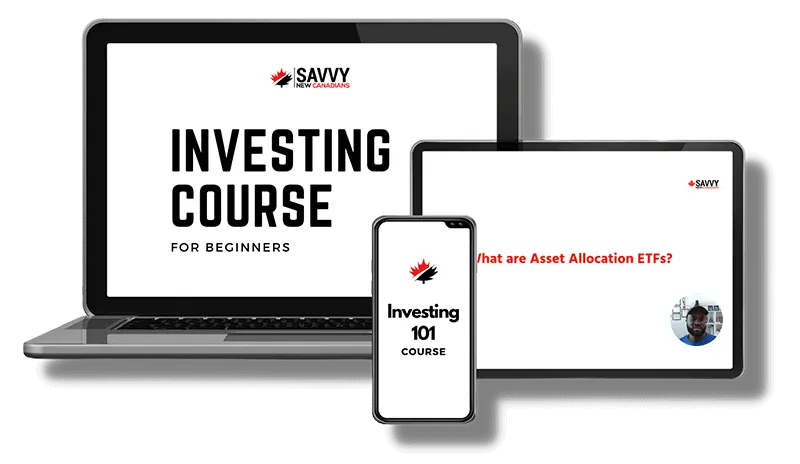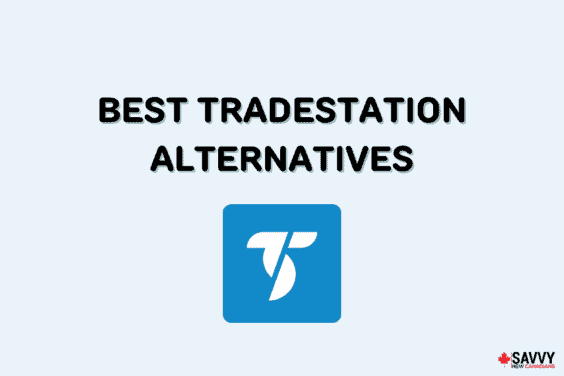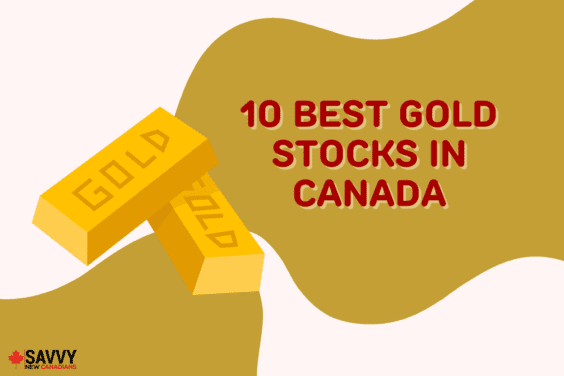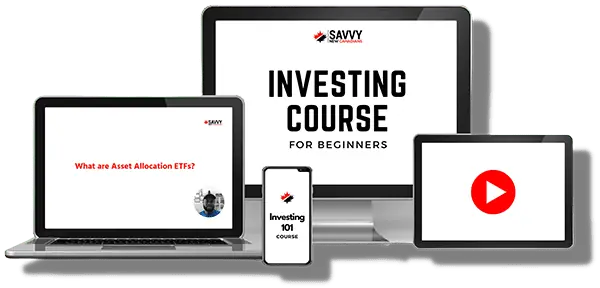Exchange-Traded Funds (ETFs) such as the Vanguard S&P 500 Index ETF (CAD-Hedged) (VSP) make it easier for investors to diversify their portfolio holdings while saving on fees.
With low MER or Management Expense Ratios, ETFs are advantageous to long-term Canadian investors, especially compared to traditional mutual funds.
Canadian investors can easily buy ETFs like VSP on any discount brokerage for minimal to no commission fees.
In this VSP ETF review, we will cover its holdings, performance, the pros and cons of the fund, how it compares to other similar ETFs, and how to buy it.
What is VSP?
VSP.TO is a Vanguard Canada ETF that was established in November 2012 and trades on the Toronto Stock Exchange in Canadian dollars.
It is designed to provide exposure to the 500 largest companies in the United States by tracking the benchmark S&P 500 index.
VSP is the hedged version of the Vanguard Canada S&P 500 ETF (VFV). This means that in addition to the underlying stocks in the S&P 500, VSP holds Canadian dollars as a hedge against currency fluctuations.
It is worth noting that this ETF is nearly 100% invested in stocks. Ideally, you would only hold it as a portion of your portfolio and complement it with safer assets like bonds.
Here are some key facts for VSP as of June 2023:
- Inception date: November 2, 2012
- Number of stocks: 505
- Price/Earnings Ratio: 22.1x
- Price/Book Ratio: 3.8x
- Return on Equity: 24.6%
- Earnings Growth Rate: 18.3%
- Management fee: 0.08%
- MER: 0.09%
- Assets under management: $2.77 billion
- 12-month trailing yield: 1.32%
- Distribution yield: 1.26%
- Distribution frequency: Quarterly
- Eligible accounts: RRSP, TFSA, RRIF, TFSA, DPSP, RDSP
- Currency: CAD
VSP Holdings
VSP.TO is a portfolio that holds nearly 100% US stocks but also holds a small amount of Canadian dollars as a hedge.
It holds the 500 largest publicly-traded companies in the US that compose the S&P 500 index. Therefore, its stock exposure is 100% to the US markets.
Here are the top ten holdings in VSP.TO as of June 2023:
| Ticker Symbol | Stock Name | Allocation in ETF |
| AAPL | Apple Inc. | 7.5% |
| MSFT | Microsoft Corp. | 6.96% |
| AMZN | Amazon.com Inc. | 3.06% |
| NVDA | NVIDIA Corp. | 2.65% |
| GOOGL | Alphabet Inc. Class A | 2.08% |
| GOOG | Alphabet Inc. Class C | 1.82% |
| META | Meta Platforms Inc | 1.68% |
| BRK.B | Berkshire Hathaway Inc Class B | 1.65% |
| TSLA | Tesla Inc | 1.56% |
| UNH | UnitedHealth Group Inc | 1.30% |
And here is the sector breakdown of the holdings in VSP:
| Sector | Fund Allocation |
| Information Technology | 25.83% |
| Health Care | 14.42% |
| Financials | 13.07% |
| Consumer Discretionary | 9.89% |
| Industrials | 8.43% |
| Communications Services | 8.28% |
| Consumer Staples | 7.37% |
| Energy | 4.69% |
| Utilities | 2.88% |
| Materials | 2.6% |
| Real Estate | 2.53% |
Due to their significant market caps, technology stocks like Apple and Microsoft have a considerably higher weight in VSP.
As you can see, information technology stocks account for more than a quarter of the weighted allocation of the entire S&P 500.
Related: Registered vs Non-Registered Investments.
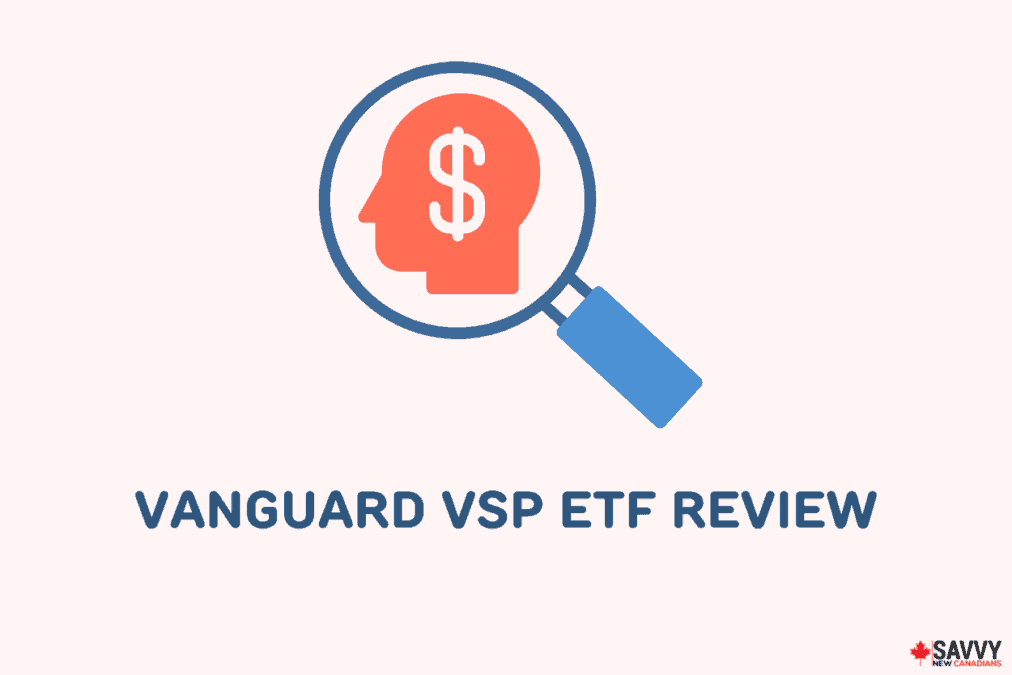
VSP Returns and Performance
Vanguard Canada allows you to track the returns and performance of its ETFs.
Since its inception, VSP.TO has had an average annualized return of about 11.82% and a cumulative return of 225%.
Below is a history of VSP’s returns comparing Market Price to its NAV over the years:
| Calendar Year | NAV Price | Market Price (CAD) |
| 2022 | -19.40% | -19.24% |
| 2021 | 28.04% | 27.90% |
| 2020 | 15.22% | 15.44% |
| 2019 | 29.26% | 29.94% |
| 2018 | -6.02% | -6.60% |
| 2017 | 20.76% | 20.85% |
| 2016 | 11.22% | 10.93% |
| 2015 | 0.44% | 0.55% |
| 2014 | 13.68% | 13.94% |
| 2013 | 32.62% | 32.73% |
And this is how VSP has performed against the benchmark S&P 500 index:
| As of May 31, 2023 | 1 Month | YTD | 1 Year | 3 Years | 5 Years | 10 Years | Since Inception |
| VSP (Market Price) | 0.52% | 9.14% | 1.48% | 38.85% | 55.76% | 177.69% | 225.81% |
| VSP (NAV) | 0.42% | 9.32% | 1.35% | 38.96% | 55.82% | 178.46% | 225.66% |
| Benchmark | 0.35% | 9.23% | 1.45% | 39.22% | 57.00% | 185.61% | 235.61% |
Note that historical returns are not a guarantee that this ETF will perform well in the feature.
VSP Fees
VSP.TO has a management fee of 0.08% and an MER of 0.09%, which are both very reasonable for the ETF industry. This means that for every $10,000 you have invested in VSP.TO, you will pay about $9.00 in fees to Vanguard.
This is significantly lower compared to what you pay the average equity mutual fund manager in Canada (1.98%).
Pros and Cons of Vanguard VSP
VSP provides Canadian investors with direct exposure to the largest companies on the US stock market without needing to hold US dollars.
Both the management fee and MER are very reasonable. With an MER of just 0.09%, you pay $0.90 per every $1,000 you have invested in the ETF on an annual basis.
This Vanguard ETF allows you to hold every company in the S&P 500 without having to buy individual stocks.
It is hedged with the Canadian dollar to avoid foreign exchange volatility with US-dollar-denominated stocks.
With that being said, VSP should not be your only holding if you want to diversify your portfolio with other assets.
The VSP ETF is easy to purchase on a number of discount brokerages that offer minimal commission fees for investing in ETFs.
VSP vs VFV
VFV is the Vanguard Canada S&P 500 Index ETF that trades on the Toronto Stock Exchange.
VFV.TO and VSP.TO are identical, aside from VSP.TO holding Canadian Dollars as a hedge.
VFV has a management fee of 0.08% and an MER of 0.09%. It also has a quarterly distribution yield of 1.26% and a trailing 12-month yield of 1.32%.
Learn more about Vanguard Canada ETFs.
VSP vs. XSP
XSP is the Blackrock iShares Core S&P 500 Index ETF (CAD-Hedged) that trades on the Toronto Stock Exchange.
XSP and VSP are nearly identical as they both track the benchmark S&P 500 index. XSP holds CAD Dollars plus a 100.51% allocation to the US-domiciled iShares Core S&P 500 ETF (IVV).
XSP.TO has a management fee of 0.08% and an MER of 0.10%. It also has a semi-annual distribution yield of 1.39% and a 12-month trailing yield of 1.19%.
Learn more about iShares Canada ETFs.
VSP vs. VOO
VOO is the Vanguard S&P ETF that is domiciled on the NYSEARCA exchange.
Canadian investors who want to invest in VOO will need to buy the stock in US dollars.
VOO has an MER fee of 0.03%, and its quarterly distribution is subject to a 15% withholding tax, even in registered accounts like a TFSA. This tax is not applicable if you hold VOO in an RRSP.
How To Buy the Vanguard VSP ETF in Canada
Questrade
Questrade is Canada’s largest discount brokerage and was founded in 1999 in Toronto, Ontario.
Questrade offers Canadian investors free ETF purchases and charges a low fee when you sell ($4.95 min.). You can also use this platform to buy and sell stocks, mutual funds, options, currencies, and precious metals.
Questrade

Trade stocks, ETFs, options, FX, bonds, CFDs, mutual funds, etc.
Get $50 trade credit with $1,000 funding
Low and competitive trading fees
No quarterly inactivity fees
Access to advanced tools and trading data
Top platform for advanced traders
Transfer fees waived
Qtrade
Qtrade is another popular discount brokerage that offers lower trading fees than the major banks.
This platform provides free ETF trading for specific funds. Unfortunately, neither VSP nor VFV qualifies for this right now.
Qtrade

Up to $150 sign-up bonus
Trade stocks, ETFs, options, bonds, etc.
Excellent platform for newbies and seasoned investors
Competitive trading fees
Excellent customer service
Wealthsimple Trade
Established back in 2014, Wealthsimple is primarily owned by the Power Corporation of Canada.
Wealthsimple Trade is a discount brokerage that offers investment services for Canadians. It has zero commission trading for stocks and ETFs.
Wealthsimple Trade

Trade stocks and ETFs for free
Great trading platform for beginners
$25 cash bonus when you deposit $200+
Transfer fees waived up to $150
Is VSP a Good Buy?
VSP checks off all of the boxes for Canadian long-term ETF investors. It provides exposure to the largest US companies in the S&P 500 with a low annual MER.
This Vanguard S&P 500 ETF has seen consistent returns with a reasonable quarterly distribution yield.
One negative is that it does not provide diversified exposure. It is 100% invested in US stocks.
Overall, VSP is an excellent way to add exposure to the US markets as a component of your portfolio.
VSP ETF Review FAQs
Yes, VSP is an excellent way to add US exposure to your Canadian investment portfolio. It has a very low annual MER and pays a quarterly distribution to shareholders. Both VSP and VFV are great ways to invest in the US stock market.
Yes, VSP.TO pays a quarterly distribution to shareholders and had a trailing 12-month yield of 1.32% as of June 2023.
You can purchase ETFs from any major brokerage in Canada. If you want to save on trading fees, it is always worth checking out discount brokerages like Wealthsimple Trade and Questrade. These discount brokerages offer zero-commission purchases of ETFs, which can help improve your gains over the long term.
Generally, equity ETFs provide a safe investing floor as it provides diversification across entire industries or markets. Equity ETFs require less upfront capital than if you were to buy individual stocks. These ETFs also see less volatility than holding a basket of individual stocks.
Related:
- Best Bond ETFs in Canada
- Vanguard Canadian Short-Term Bond Index ETF Review
- Questrade vs Wealthsimple
- Best Investment Newsletters
Vanguard S&P 500 Index ETF VSP Review
Overall
Summary
Vanguard S&P 500 Index ETF provides exposure to the S&P 500. This VSP ETF review covers its holdings, returns, fees, how to buy in Canada, and how it compares to VFV, VOO, and XSP.
